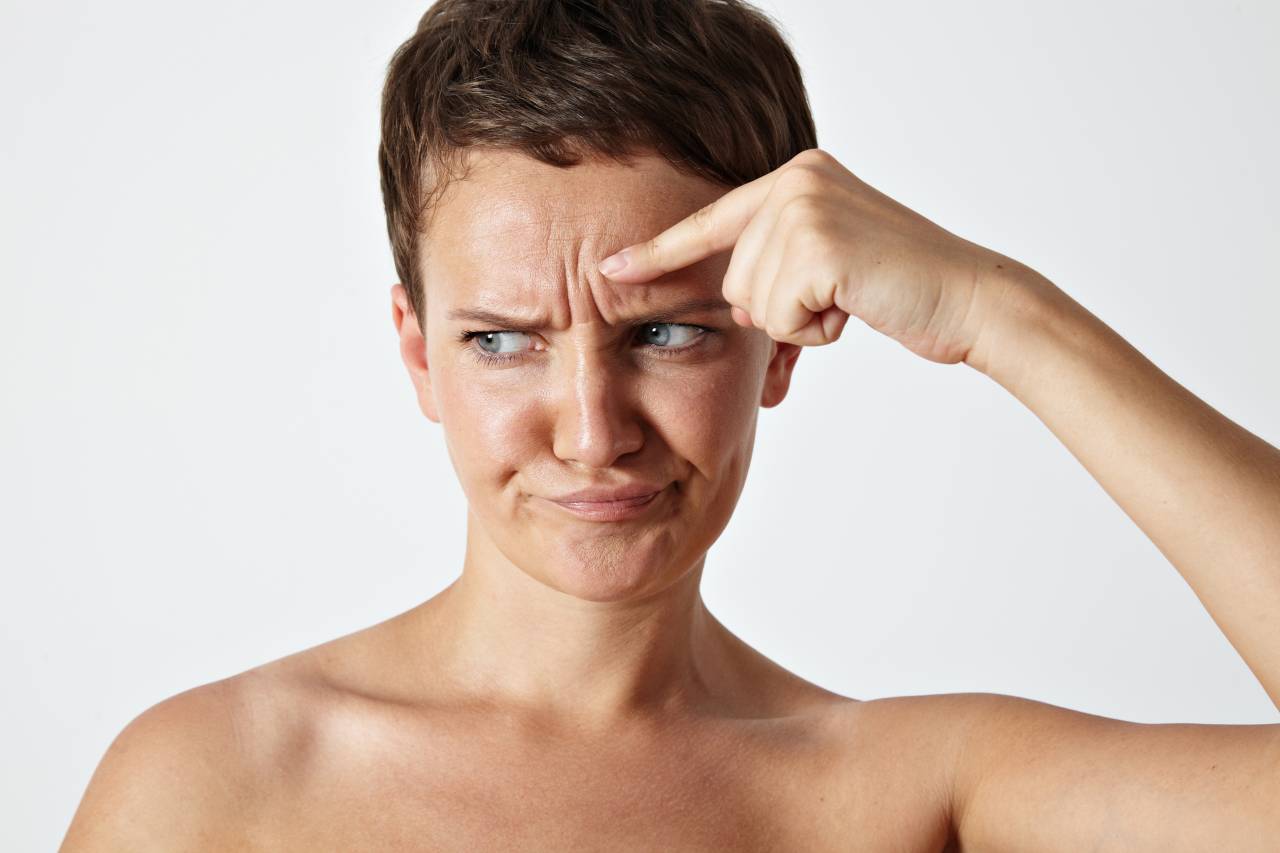Over the years, our body undergoes various changes that indicate the presence of the aging process as a whole. In the face, one of the first signs is the appearance of wrinkles.
Did you know that we have 3 different types of wrinkles? Although they may seem similar, the origin and characteristics of each differ greatly, requiring personalized treatments.
Dynamic wrinkles are the first to appear on the face as we age. They are the little wrinkles that appear when we make a movement or expression and disappear when we are at rest. This happens because there is muscle action in the area, but the skin still has enough collagen to return to its normal position without making marks.
Static wrinkles, on the other hand, are a result of not treating dynamic wrinkles. In this case, the muscle continues to work at full strength, but the skin, which has already lost collagen and elastin, weakens and begins to show fine expression lines that can evolve into deeper creases or folds. That’s why wrinkles become noticeable on the face even without making any expression.
There is also a third type of wrinkle that we need to be aware of, known as sleep lines. They are not considered natural wrinkles like the other two, as they appear in people who have persistent habits of predominantly sleeping on one side, exerting pressure on that region and causing folds in the skin. Since this pressure persists for several minutes and even hours per night, in a habit that has been repeated for years, the skin also loses quality and develops vertical wrinkles, usually on the forehead, cheeks, and corner of the mouth, with greater intensity on the side of the face where the person tends to sleep.

When we talk about Botulinum Toxin (Botox®️), we usually think that it improves and treats all types of wrinkles we have, but that’s not entirely true. It successfully treats dynamic wrinkles, but it alone does not treat static wrinkles or sleep lines.
This is because Botox®️ acts on our muscles, and as mentioned earlier, static and sleep wrinkles have a skin-related component. The best way to use Botulinum Toxin is preventively, to prevent dynamic wrinkles from becoming static wrinkles.
There are studies that prove that long-term preventive treatment with Botulinum Toxin reduces the chances of dynamic and static wrinkles appearing.
An example is the case of the twin sisters in the photos below. Only the one on the right received treatment with Botulinum Toxin, and we can notice that she has fewer signs of aging and much better skin quality compared to her sister (left side) who did not receive any preventive treatment.


Regarding static wrinkles and sleep lines, it is more than necessary to combine Botulinum Toxin with other skin treatments such as Collagen Biostimulators and PDO Threads, as we will be treating both the muscles and strengthening the skin to resist muscle force.
Only by simultaneously correcting the cause and the consequence of wrinkles can we achieve a satisfactory result for this type of situation. In other words, the Botulinum Toxin is essential to prevent the signs from appearing and should not be used only when there is already an apparent wrinkle.
It’s worth noting that Facial Harmonization consists of a set of aesthetic procedures that seek to harmonize and reduce the signs of aging.



